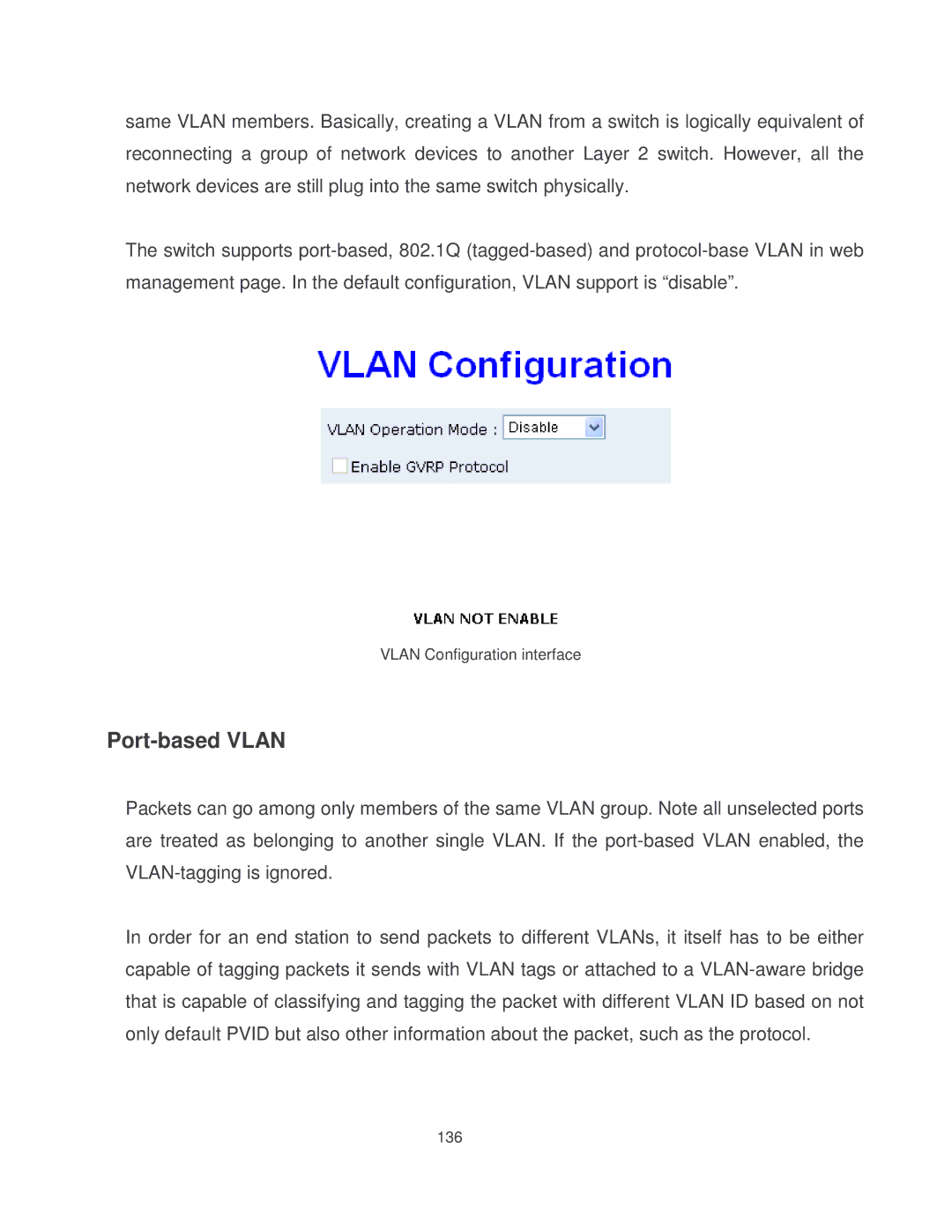
same VLAN members. Basically, creating a VLAN from a switch is logically equivalent of reconnecting a group of network devices to another Layer 2 switch. However, all the network devices are still plug into the same switch physically.
The switch supports
VLAN Configuration interface
Port-based VLAN
Packets can go among only members of the same VLAN group. Note all unselected ports are treated as belonging to another single VLAN. If the
In order for an end station to send packets to different VLANs, it itself has to be either capable of tagging packets it sends with VLAN tags or attached to a
136
